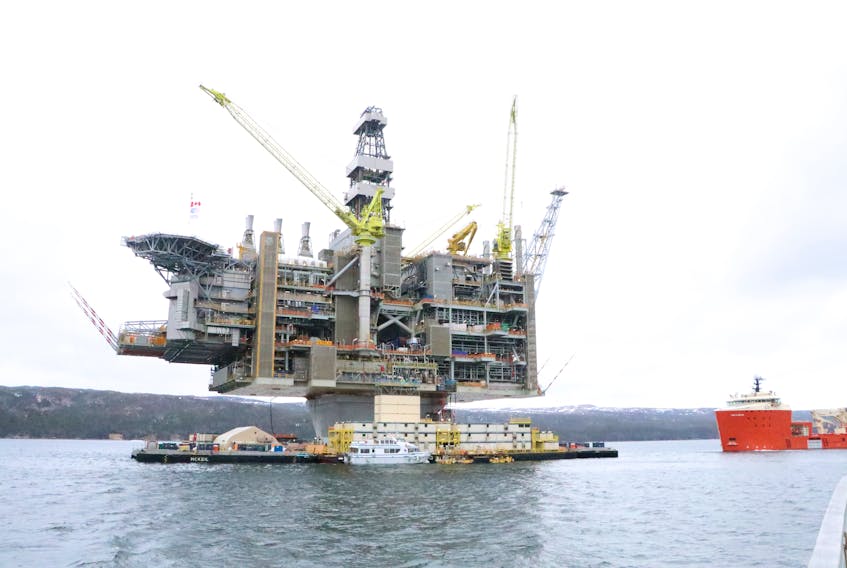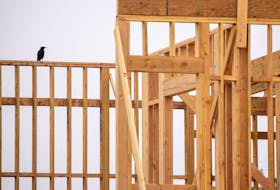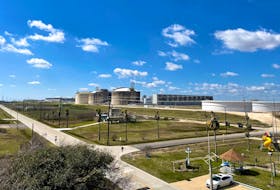Allowing oil and gas exploration and development in marine refuges off the province’s east coast — while bottom-contact fisheries are banned — doesn’t make sense, World Wildlife Fund (WWF) Canada says.
WWF Canada said Wednesday it became extremely concerned after the Canada-Newfoundland and Labrador Offshore Petroleum Board (CNLOPB) issued a call on April 4 for exploration licences in part of the Northeast Newfoundland Slope — an area encompassing 46,833 square kilometres tucked against the 200-mile limit off Newfoundland’s northeast coast.
The Northeast Newfoundland Slope (formerly known as Tobin’s Point) was one of seven new marine refuges announced by Fisheries and Oceans Minister Dominic LeBlanc last December.
Having the area declared a marine refuge is aimed at contributing to long-term conservation of biodiversity by protecting corals and sponges.
Megan Leslie, president and CEO of WWF-Canada, says oil and gas activity would put the fish-spawning area at risk. She said the area has fragile, slow-growing corals that provide habitat for juvenile fish.
“We are struggling to understand why Fisheries and Oceans Canada would create a refuge for wildlife in December 2017, only for the Newfoundland and Labrador offshore board to call for oil and gas project bids there four months later,” Leslie said.
“Closing marine refuges to fishing activity without restricting other industrial activities like oil and gas makes no sense, and jeopardizes conservation goals. The Northeast Newfoundland Slope was declared a marine refuge to protect fish nurseries and cold-water corals and sponges, which would be put at risk by oil and gas activities.”
RELATED STORY:
CNLOPB issues call for exploration and production licence bids in two regions
Marine refuges are not deemed full Marine Protected Areas in which oil and gas activity — and all human activity — could be banned. In fact, according to information on the Department of Fisheries and Oceans (DFO) website, regulatory measures are developed for each area based on an overview and assessment report, consultations and the selection of activities that would be allowed while still achieving the area’s conservation objectives.
In addition to the Northeast Newfoundland Slope, LeBlanc last December announced the following marine refuges: Davis Strait and Disko Fan, both off the coast of Nunavut; Hatton Basin off the coasts of Nunavut and Newfoundland and Labrador; Hopedale Saddle, Hawke Channel and the Funk Island Deep — all off the coast of Newfoundland and Labrador.
The Fish, Food and Allied Workers (FFAW-Unifor) union said the closure of any marine areas must restrict all other marine industrial activities in addition to fishing activity.
“We cannot ask fish harvesters to accept the closure of an area to fishing activity in the name of conservation while continuing to allow oil and gas exploration in that same area,” FFAW-Unifor president Keith Sullivan said last week.
“Oil and gas and seismic activity will continue unrestricted in these areas, calling into question whether the marine refuges will truly achieve their conservation goals. These closures have shut harvesters out while letting oil and gas in.”
In February, the Newfoundland and Labrador Government announced “Advance 2030,” a plan to work with the oil and gas industry to position the province globally as a preferred location for oil and gas development. The plan stemmed from work done by the Oil and Gas Industry Development Council established in January 2017 to help create a long-term vision for the province’s oil and gas industry.
The provincial government stated that by 2030 it envisioned: over 100 new exploration wells drilled; multiple basins producing over 650,000 barrels of oil equivalent per day; shortened time from prospectivity to production; direct employment of more than 7,500 people in operations; a robust, innovative global supply and service sector; commercial gas production; and renewables and oil and gas integrated in a world-class energy cluster.
In such an environment, keeping oil and gas exploration out of marine refuge areas may be difficult.
“Oil and gas exploration and exploitation is not compatible with ocean conservation,” Leslie said. “WWF-Canada is concerned about opening up any kind of protected area to these activities.”
On April 4, the CNLOPB issued two calls for bids for exploration licences and a bid for a production licence. One bid is for exploration licences in the eastern Newfoundland region, consisting of 16 parcels totalling 3,941,046 hectares.
The other exploration bid is for a single 142,448-hectare parcel in the Jeanne d’Arc Region.
The sole criterion for selecting a winning bid will be the total amount of money the bidders commit to spend on exploration of the parcels during the first period of a nine-year licence. Both have a minimum bid amount of $10 million in work commitments.
Meanwhile, the CNLOPB is also calling for bids on a $25-million production licence for a 1,423-hectare parcel in the Jeanne d’Arc Region.
The only criteria for selecting a winner will be the highest drilling deposit bid.
The closing date for all bids is Nov. 7.









